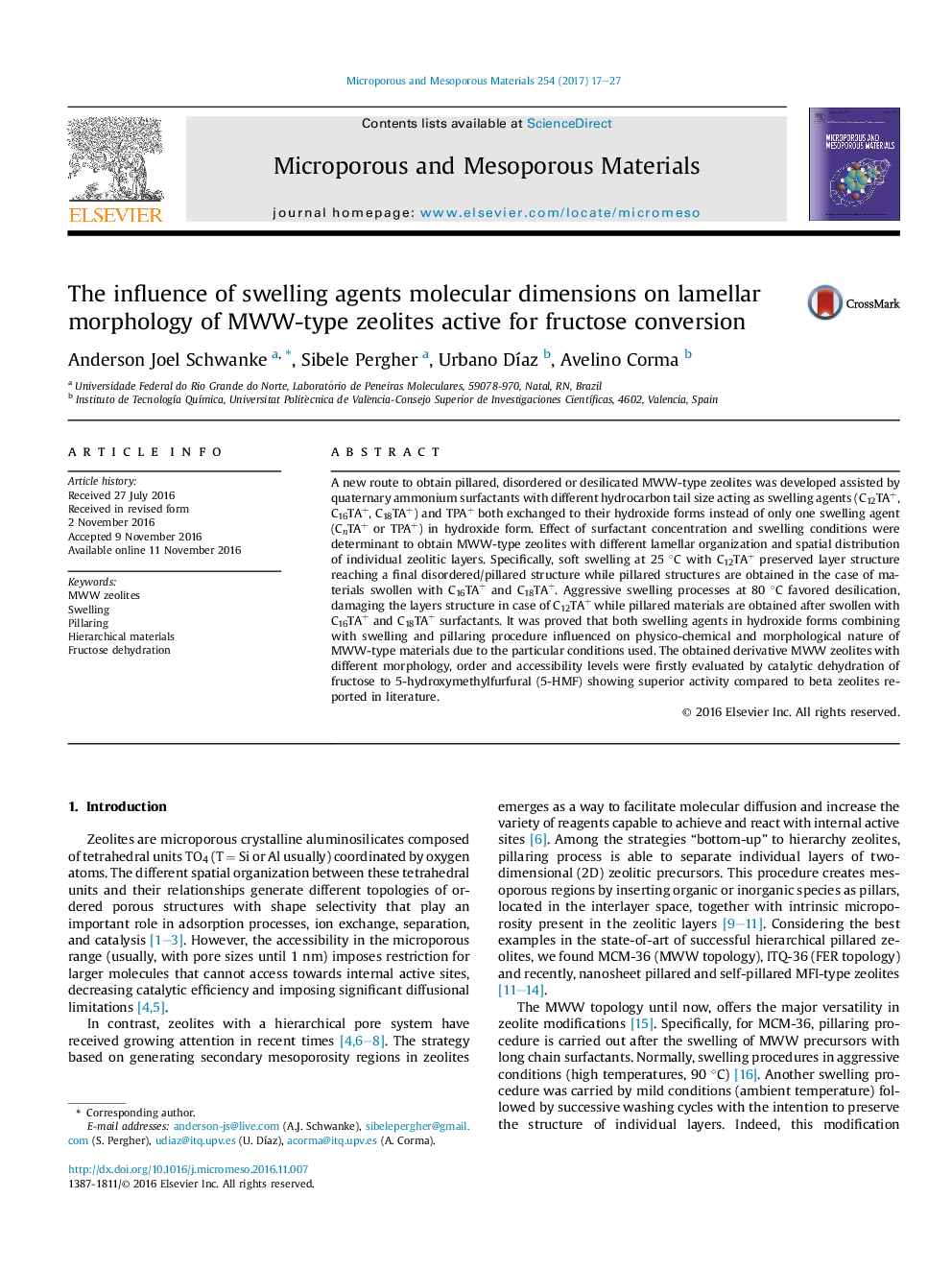| Article ID | Journal | Published Year | Pages | File Type |
|---|---|---|---|---|
| 6456538 | Microporous and Mesoporous Materials | 2017 | 11 Pages |
â¢Different molecular dimensions of surfactant generates different pore architectures and accessibility.â¢Soft swelling treatment favored MWW layer preservation.â¢Aggressive swelling favored desilication.â¢MWW-type materials are active to fructose conversion.â¢MWW pillared materials exhibited high 5-HMF yield in just 45 min of reaction.
A new route to obtain pillared, disordered or desilicated MWW-type zeolites was developed assisted by quaternary ammonium surfactants with different hydrocarbon tail size acting as swelling agents (C12TA+, C16TA+, C18TA+) and TPA+ both exchanged to their hydroxide forms instead of only one swelling agent (CnTA+ or TPA+) in hydroxide form. Effect of surfactant concentration and swelling conditions were determinant to obtain MWW-type zeolites with different lamellar organization and spatial distribution of individual zeolitic layers. Specifically, soft swelling at 25 °C with C12TA+ preserved layer structure reaching a final disordered/pillared structure while pillared structures are obtained in the case of materials swollen with C16TA+ and C18TA+. Aggressive swelling processes at 80 °C favored desilication, damaging the layers structure in case of C12TA+ while pillared materials are obtained after swollen with C16TA+ and C18TA+ surfactants. It was proved that both swelling agents in hydroxide forms combining with swelling and pillaring procedure influenced on physico-chemical and morphological nature of MWW-type materials due to the particular conditions used. The obtained derivative MWW zeolites with different morphology, order and accessibility levels were firstly evaluated by catalytic dehydration of fructose to 5-hydroxymethylfurfural (5-HMF) showing superior activity compared to beta zeolites reported in literature.
Graphical abstractDownload high-res image (309KB)Download full-size image
